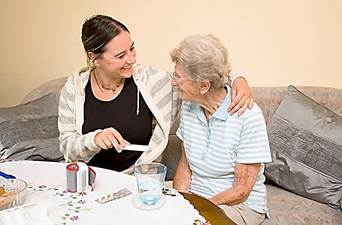
Confusion Still Present Between Palliative Care and End of Life Care
Palliative care and hospice care: Many people link the two in their minds, but while they are closely related, they are two distinct things. If your loved one is facing a serious illness, you’ve probably heard a lot about treating pain. The terms “palliative care” or “hospice” have likely come up. But while both are designed to deliver comfort and relief to the patient, they differ in some critical ways, which we will outline here. That being said, confusion still exists among the general public and even the healthcare community about palliative care and end of life care in Santa Clara and elsewhere.
It’s easy to see where the confusion arises. A recent study by CAPC shows that many agencies that offer home- and community-based palliative care (HCPC) services are, in fact, hospice agencies. If you conduct a Google search for “palliative care agencies” near you, you’ll likely find the first page dominated by hospice agencies. Further blurring the line between palliative care and end of life care is the fact that many palliative care agencies receive a performance bonus for any hospice transitions. Further, some hospice agencies are getting into the palliative care business to be able to readily transition patients into hospice, at which point the reimbursement payments are much higher, says Health Affairs.
Indeed, many chronically, very sick patients nearing the end of life need palliative care. However, many others do as well. Like the chemo patients who are expected to survive their cancer, or the transplant patient who awaits a new liver, or the dementia patient whose caregiver has become burnt out and needs some help. It’s true that palliative care can be seen as a type of hospice care. However, the danger in this thinking is that patients will need palliative care in the same way they do hospice care. The healthcare field has come a long way in distinguishing palliative care from hospice care, but the stigma is still there.
What is Palliative Care?
The goal of palliative care is to ease pain for patients who are very sick and to help with other problems if the illness is serious yet not considered to be life-threatening at the moment. It can help patients live comfortably with their symptoms that may arise from cancer, kidney disease, AIDS, etc., as well as with the side effects of treatments such as chemo. Palliative medicine isn’t meant to replace other treatments. It’s in addition to those treatments where palliative care can help the patient and family effectively handle anything from nausea to nerve pain to shortness of breath.
When an illness makes it difficult or impossible to work, play, move around, or brings on depression, palliative care can be extremely helpful because it puts people back in control of their lives. When an illness is expected to become fatal, palliative care can help patients live as active a life as possible. In general, people can transition into and out of palliative care without having to move on to hospice care.
Palliative care involves specialized medical care for people living with a serious illness, with a focus on providing relief from the symptoms and stress of that illness. The end goal is to improve the quality of life for the patient as well as the family.
What is Hospice Care?
Hospice care is for people whose doctors have told them they will not be able to recover from their condition. Hospice care, also known as end of life care, aims to ease pain for the patient, and help families cope with and prepare for that eventuality. People generally enter hospice care when they are told they have less than six months to live. Hospice care can be provided in a facility such as a nursing home or hospital, or in the patient’s own home, where they can receive care from family members and caregivers.
Hospice care is no longer about treating the underlying condition with the hope of the patient getting better, which is what palliative care does. Rather, this kind of care makes the patient as comfortable as possible as they face the last stage of life. It involves a whole team of doctors and nurses, to be sure, but also family members, counselors, social workers or clergy. Together as a unit, they can help both the patient and family deal with the grief of dying and all the emotions that come with it, from anger and sadness to guilt and regret, says WebMD.
Contact Pathways Home Health and Hospice
Pathways has many decades of experience helping people live their last days in comfort and dignity. When the weight of care for families is eased, it allows patients and loved ones to cherish their remaining time together in a more meaningful way. Contact us now at 888-978-1306 to learn more about our hospice care services in Santa Clara and surrounding areas.

